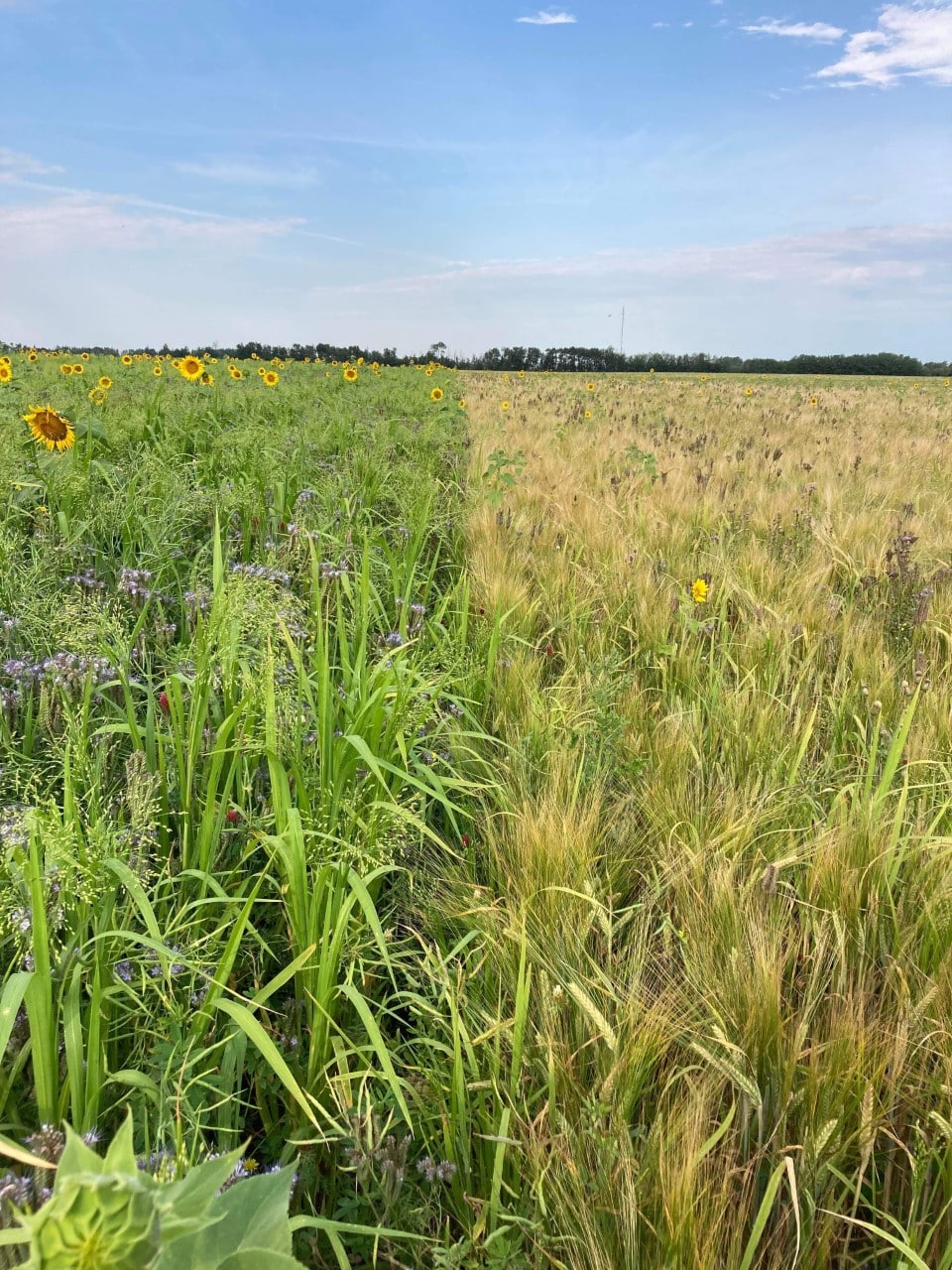Regenerative agriculture is a system of farming that seeks to improve soil health, increase biodiversity, and promote ecological balance. One of the key components of regenerative agriculture is increasing plant diversity.

In natural settings, there are no monocultures, but rather a dynamic blend of different plants growing together in harmony, which changes with time, climate, and management. By pairing functional plant groups, we can create a diverse mix that benefits farm ecology.
Functional plant groups are described by what they do for the plant, soil and animal ecology. Grass, legume, Brassica, non-Brassica broadleaf, and forb are the five main groups of functional plants. Depending on what the goals are and what plants are available, there are other ways of breaking them into different groups. Each of these groups can be further grouped into warm and cool species groups, which then can be further grouped into annual, biennial and perennial options. By figuring out your goals, species can be selected based on what they bring to the blend.
For example, a mix of oat, barley, triticale, and pea covers two functional plant groups: annual cool season legume and annual cool season grasses. By comparison, a mix of oat, Japanese millet, Italian ryegrass, pea, turnip, Phacelia, chicory, and sunflower covers more functional plant groups: annual cool season grass, annual warm season grass, biennial cool season grass, annual cool season legume, biennial cool season Brassica, annual cool season forb, biennial warm season forb, and annual warm season non-Brassica broadleaf. This plant diversity will help drive soil health.

Once you know what species you want, seeding rate is the next part of the equation. To determine the amount of the blend that will be allocated to each species in the mix, we need to know the number of seeds in a pound, kilogram or bushel of the seed and the regular plant density of a monoculture crop. The grass will produce biomass and provide a fibrous root system.
There are a lot of options for functional plant groups for both warm and cool season species, annual, biennial, and perennial. Legumes provide a nitrogen fixing opportunity due to their relationship with nitrogen fixing rhizobia. Brassica species are nutrient scavengers. Non-Brassica broadleaf is a catch-all type of grouping due to the vast diversity of the plant types. Forbs are described as flowering plants, and they tend to disappear quickly in a system with animals. Therefore, reintroducing and encouraging flowers to be in our system helps create healthy soil.
Creating a goal is important to make smart species selection, knowing the function of the species, and identifying synergistic and antagonistic species. The seeding rate will determine the proper expression of each species. Time of seeding will also dictate what group of functional plant groups will be used.
Seeding warm season species while soil temperatures are cool will put them at a disadvantage to the cool species that are better adapted to those conditions. Likewise with biennial and perennial plants. They tend to be slower-establishing than annuals, so can disappear in a mix if the annual species are seeded at too high of a rate. No sense seeding different functional plant groups if they are not allowed to establish.
Modern agriculture has developed a production system based on monocultures. This has led us to a path of increased inputs and expense. By re-establishing plant diversity along with other soil health principles, we can start healing our soils and recovering net margin that we have lost over the years.
—Elmy is founder of Cover Crops Canada. His book Cover Cropping in Western Canada is available through Friesen Press, Amazon, and digitally through Apple Books, Kindle, and Google Play. For more info on Cover Crops Canada visit covercrops.ca










